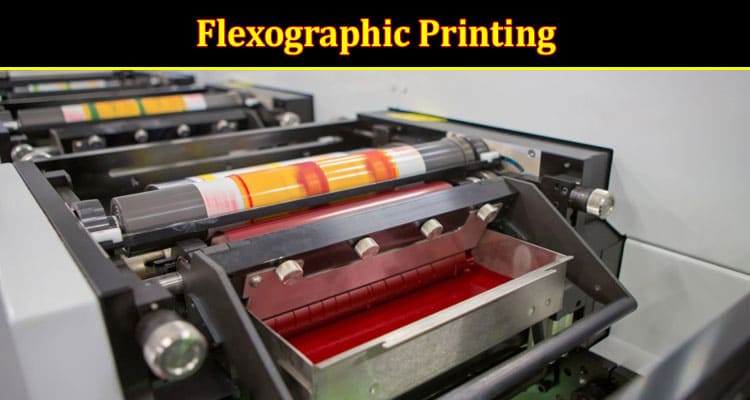Flexographic printing is popular for custom labels, packaging, and other prints. Discover its benefits, history, and manufacturing materials.
Flexographic printing, also known as flexo printing or simply flexo, is an efficient and cost-effective way to produce high quality prints on a variety of different materials. This type of print method has quickly become popular in the packaging industry due to its ability to handle large volumes with speed and accuracy while producing beautifully detailed images.
If you’re considering investing in flexographic printing for your business needs, read on to learn more about this process, including what makes it unique from other forms of printing and the benefits that come along with using it.
What is flexographic printing and how does it work
Flexographic printing is a widely used printing technique that relies on flexible printing plates. Unlike other printing techniques, flexographic printing can print on a variety of substrates, including plastic, metal, paper, and even textiles.
The process of flexographic printing is simple, yet highly effective. First, the image or text is engraved onto a rubber or polymer plate, which is then mounted onto a cylinder. The cylinder rotates, and the flexible plate is pressed against the substrate to create the print.
Flexographic printing is known for its high-quality results and fast printing speeds, making it a popular choice for many industries.
Benefits of flexographic printing
Flexographic printing is a versatile and cost-effective method of printing that has revolutionized the world of packaging and label printing. The benefits of flexographic printing are numerous, including high-quality output, efficient production times, and cost-effectiveness in large-scale printing runs.
This method is ideal for producing a wide range of products, from food packaging to medical labels, and more. In addition, flexographic printing’s versatility allows for quick color changes and the ability to print on a wide range of materials, making it the perfect choice for modern packaging requirements.
Overall, the benefits of flexographic printing make it a popular choice for businesses and manufacturers looking to produce high-quality packaging and labels while retaining cost-effectiveness.
The different types of materials that can be used in flexographic printing
Flexographic printing may seem like a simple process on the surface, but the materials used can greatly impact the final product. One of the most common materials is rubber, which acts as the printing plate and is flexible enough to conform to curved surfaces.
However, newer technologies have led to the use of photopolymer plates, which offer more precision and durability. Inks are also a crucial part of flexographic printing, with options ranging from water-based to UV-curable.
Other materials, such as substrates and adhesives, also play a role in the process, with different options best suited for certain applications. With so many different materials available, the possibilities for flexographic printing are endless.
The process of designing a product for flexographic printing
Designing a product for flexographic printing is a meticulous process that requires attention to detail and a keen eye for color. From choosing the right substrate to selecting the appropriate ink, every decision must be made with the end goal in mind: creating a quality, eye-catching product.
Designers must also consider the various printing parameters, such as plate thickness and screen ruling, in order to ensure that their design truly comes to life on the printed page.
With all these considerations in mind, it’s no wonder that designing for flexographic printing is truly an art form. But for those who rise to the challenge, the end result is a beautiful and professional-looking product that is sure to make an impact.
Tips for getting the best results when using flexographic printing
Flexographic printing is a popular printing technique used in many industries. To get the best results, there are some important tips to follow.
Firstly, it is essential to use high-quality materials like plates, inks, and substrates. This will help to ensure that the printed product is of a high standard and has vibrant colors.
Additionally, it is important to ensure that the press is set up correctly and that the ink volume is adjusted to achieve a consistent print quality. Proper maintenance of the equipment and frequent cleaning of the plates and rollers can also help to avoid problems and keep the results at their best.
With these tips, you can achieve amazing results with flexographic printing and produce high-quality printed products that stand out.
In conclusion, flexographic printing is a versatile and cost-effective form of printing that offers a wide range of designs, materials, and longevity for printed products. And with the help of Workflow’s experienced team of specialists who have years of flexography experience under their belt, you can rest assured knowing that your printed project will be done quickly and well.

